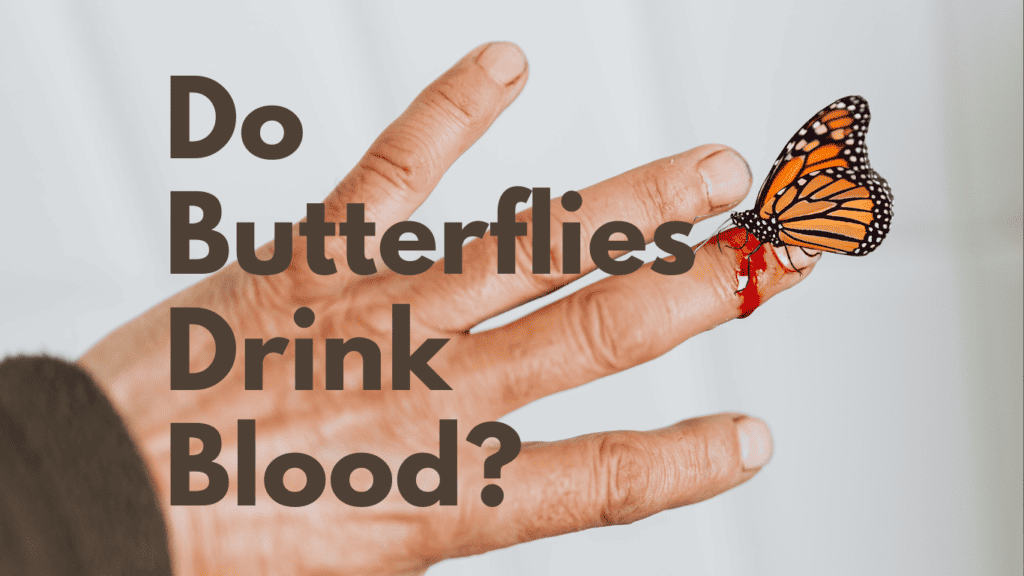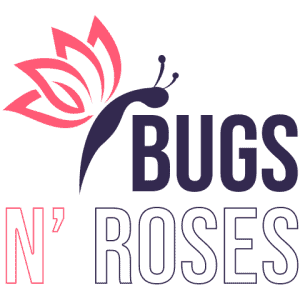Have you ever wondered, “Do butterflies drink blood?” The answer is yes, but not in the way you might think. Butterflies don’t have the mouthparts to pierce skin or blood tissues. Instead, they can drink from droplets of blood left behind by wounded animals or from blood that has spilled or stagnated from deceased creatures. This behavior allows them to gain essential minerals, much like they do from mud puddling.
It’s crucial to clarify that not all butterflies engage in this unusual behavior. It is most commonly observed in butterflies belonging to the “Erebia” genus. However, it’s worth noting that butterflies primarily rely on flower nectar for their nutrition. Drinking blood is not their main source of sustenance but rather an alternative way to obtain minerals.
Butterflies and Their Diet

Butterflies are known for their beautiful wings and graceful movements. However, their diet is just as fascinating as their appearance. Butterflies have a varied diet that includes:
- Nectar: Butterflies are known to drink nectar from flowers. This is their primary source of food and provides them with the energy they need to fly and mate.
- Pollen: Some butterflies also feed on pollen. Pollen is rich in protein and provides the nutrients needed for growth and development.
- Water: Butterflies need water to survive. They obtain water by drinking from puddles, wet sand, or by sipping water droplets from plants.
- Rotting Fruit: Some species of butterflies feed on rotting fruit. This provides them with a source of sugar and other nutrients.
- Sap: Butterflies also feed on sap from trees. This is a rich source of sugars and other nutrients.
- Blood: While it is not a part of their natural diet, some butterflies have been known to drink blood. This is because blood contains minerals that are essential for their survival.
Do Butterflies Drink Blood
Butterflies are known for their colorful wings and the ability to sip nectar from flowers. However, did you know that some species of butterflies also drink blood?
Vampire Moth
One example of a butterfly species that drinks blood is the vampire moth. Vampire moths are found in parts of Asia and have been known to feed on the blood of mammals, including humans. However, it’s important to note that vampire moths are not true butterflies, but rather a type of moth that has evolved to mimic the appearance of a butterfly.
While it’s rare for humans to encounter vampire moths, it’s important to note that they do not pose a significant threat to human health. Vampire moths typically feed on the blood of animals that are already weakened or injured, and do not carry any diseases that can be transmitted to humans.
Understanding Proboscis
Butterflies have a long, straw-like mouthpart called a proboscis. It is a tubular structure that is used for feeding on nectar and other fluids. The proboscis is made up of two flexible strands called the maxillary galeae, which are joined by cuticular projections called the legulae. The proboscis is longer than the body of some butterflies and can be folded inside their mouth cavity when not in use.
The proboscis is a multifunctional material and a fluidic device that allows butterflies to sip nectar, plant sap, animal tears, blood, and other fluids. The proboscis is also used for sensing taste. Butterflies have taste receptors on their proboscis that help them to identify the quality of the nectar they are feeding on.
The taste receptors on the proboscis of butterflies are highly sensitive and can detect even small amounts of sugar in nectar. Butterflies can also distinguish between different types of nectar based on their taste. This ability to sense taste helps butterflies to select the best quality nectar for their survival.
Butterflies and Minerals
Butterflies are known to feed on a variety of liquids, including sweat, minerals, urine, salts, soil, and sodium. These liquids provide the butterflies with essential nutrients and minerals that are necessary for their survival.
One of the most common liquids that butterflies drink is sweat. Sweat contains minerals such as sodium, potassium, and magnesium, which are essential for the butterfly’s metabolism and muscle function. Butterflies can be seen landing on sweaty skin to drink the minerals.
Butterflies also drink from other sources of minerals, such as urine. Urine contains nitrogen, which is essential for the butterfly’s growth and reproduction. Butterflies can be seen sipping on urine puddles or drops.
In addition to sweat and urine, butterflies also drink from soil and salts. These sources provide the butterflies with essential minerals such as calcium and iron, which are necessary for their survival. Butterflies can be seen landing on soil and rocks to drink from them.
Butterflies and Amino Acids
Butterflies are known to drink various fluids, including nectar, sap, and even animal urine. However, some butterfly species have been observed drinking blood, which may seem surprising to some people. But why do butterflies drink blood?
One reason is that blood contains essential amino acids, which are the building blocks of protein. Butterflies require amino acids to build and repair their bodies, just like any other organism. However, some plants do not provide enough amino acids for butterflies, which is why they need to supplement their diet with other sources.
When butterflies drink blood, their saliva quickly digests the pollen, freeing up amino acids that they can absorb. This allows them to obtain the necessary nutrients without having to consume large amounts of blood. However, it is important to note that not all butterfly species drink blood, and those that do typically only do so on rare occasions.
In addition to amino acids, blood also contains other essential nutrients that butterflies need, such as minerals and salts. These nutrients help butterflies maintain their health and energy levels, which is crucial for their survival. However, it is important to note that butterflies do not rely solely on blood for their nutrition, as they also need other sources of nutrients to maintain a balanced diet.
Butterflies, Moths and Other Insects
Butterflies and moths are known to feed on nectar from flowers. However, some species of butterflies and moths have been observed drinking from puddles, mud, and even animal waste. This behavior is called mud-puddling, and it is more common among male butterflies and moths.
Moths are also known to drink from puddles to make up for their sodium deficit, just like butterflies. In addition to butterflies and moths, other insects such as mosquitoes and ants also drink from puddles and other moist substances to obtain nutrients.
It is important to note that not all butterflies and moths drink from puddles or other moist substances. Some species rely solely on nectar for their nutrition.
Butterflies and moths are often confused with each other, but they have distinct differences. Butterflies are typically more colorful and have slender bodies, while moths are often dull-colored and have plumper bodies. However, both butterflies and moths play important roles in pollination and are crucial to the ecosystem.
Butterfly Digestive System
Butterflies have a simple digestive system that is composed of a long tube-like structure called the alimentary canal. This canal runs from the mouth to the anus, and it is divided into three main parts: the foregut, midgut, and hindgut.
The foregut is responsible for the initial breakdown of food, and it includes the mouth, esophagus, and crop. The mouthparts of butterflies are adapted for sucking nectar and other liquids, and they do not have teeth for chewing solid food. The crop is a storage organ that allows butterflies to store food temporarily before it is passed on to the midgut.
The midgut is where most of the digestion and absorption of nutrients takes place. It is lined with cells that produce enzymes to break down food into simpler molecules that can be absorbed into the bloodstream. The midgut also contains microvilli that increase the surface area for absorption.
The hindgut is responsible for the final stages of digestion and the elimination of waste. It includes the intestine, rectum, and anus. The intestine absorbs water and salts from the undigested food, while the rectum stores the waste until it is eliminated through the anus.
Despite these myths and superstitions, butterflies are fascinating creatures that play an important role in our ecosystem.
Butterflies and Fermented Fruit
Butterflies are known to feed on a variety of food sources, including fermented fruit. When fruit starts to rot, it produces alcohol, which can attract butterflies. Some species of butterflies are more attracted to fermented fruit than others.
Butterflies that are attracted to fermented fruit include the fruit-piercing moth, the red admiral butterfly, and the comma butterfly. These butterflies are known to feed on rotting fruit and even drink the juices of fermented fruit.
Fermented fruit can provide butterflies with a quick source of energy, but it can also be dangerous for them. Alcohol can impair a butterfly’s ability to fly and can even be lethal in high doses. Therefore, it is important for butterflies to consume fermented fruit in moderation.
Frequently Asked Questions
Do butterflies drink tears?
Butterflies have been observed drinking tears from animals, including humans. This behavior is known as lachryphagy. Butterflies may drink tears for the nutrients and minerals they contain, but it is not a common behavior.
Do butterflies drink turtle tears?
There have been reports of butterflies drinking turtle tears, but this behavior is rare and not well-documented. It is possible that butterflies may be attracted to the salt in the tears, but more research is needed to understand this behavior.
Do butterflies have hearts in their wings?
No, butterflies do not have hearts in their wings. Like all insects, butterflies have an open circulatory system where their organs are bathed in a fluid called hemolymph. The heart is located in the abdomen.
Do butterflies pump blood into their wings?
No, butterflies do not pump blood into their wings. Instead, their wings are filled with hemolymph, which is circulated through the body by the heart in the abdomen.
Are butterflies attracted to blood?
Butterflies are not typically attracted to blood. While they may drink blood if it is available, they do not actively seek it out. Butterflies are more commonly attracted to flowers and other sources of nectar.
Do butterflies eat meat?
No, butterflies do not eat meat. They are herbivores and feed primarily on nectar from flowers. Some species of butterfly may also feed on tree sap or rotting fruit.
Recent Posts
How Can I Create A Habitat For Skipper Butterflies In My Garden With 3 Easy Plants
Skipper butterflies are a diverse group of insects that are found all over the world. They are known for their quick, darting flight and their often colorful wings. Skippers are attracted to...
Common Species Of Butterflies In Maryland: 21 Unique Species
Maryland is home to a variety of beautiful butterflies, from the large and showy Eastern Tiger Swallowtail to the tiny and delicate Blue Dasher. There are over 150 species of butterflies in Maryland,...
